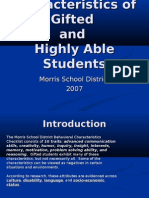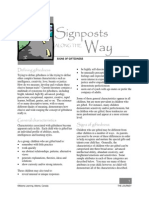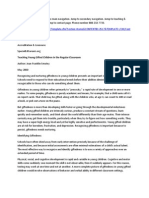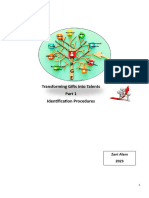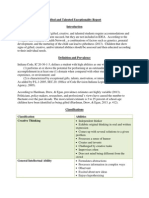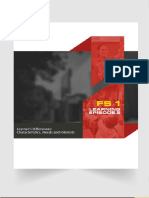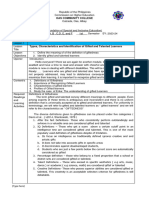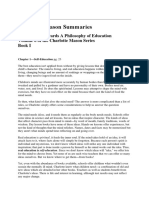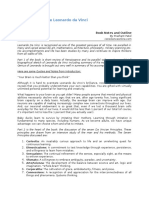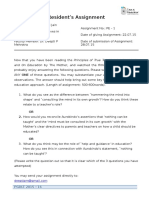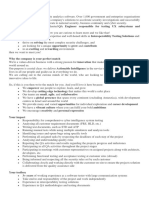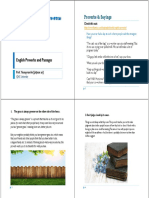Early Childhood
Gifted Students
Kevin D. Besnoy, Ph.D. ~
The Highland Schools,
Birmingham, AL
�Todays Session
Initiating Activity
ly
r
a
E
f
o
s
ic
t
is
r
e
t
c
a
r
Cha
s
t
n
e
d
u
t
S
d
e
t
if
G
d
o
Childho
in
s
ic
t
is
r
e
t
c
a
r
a
h
C
g
in
y
Identif
the Classroom
�What do you already know?
Cognitive Ch
aracteristics
s
ic
t
is
r
e
t
c
a
r
a
h
C
l
a
n
Emotio
Social Characteristics
s
c
i
t
s
i
r
e
t
c
a
r
a
Creative Ch
�Typical Developmental Milestones
3 Months
7 Months
1 Year
2 Years
Begins to
develop a
social smile
Enjoys imitating
Enjoys social
people during
play
play
Raise head
and chest
while lying
on stomach
Reaches
Points to
Transfers
sitting
objects or
objects from
pictures when
position
hand to hand
its named
without help
Improved
Watches face
ability to
intently
track moving
objects
Smiles at the
Responds to
sound of your
own name
voice
Bangs two
objects
together
Walks alone
Begins make
believe play
3 Years
4 Years
5 Years
Climbs well
Goes up and
down stairs
without
support
Swings, climbs,
hops, and
summersaults
Makes
continuous
symbols that
resemble
writing
Read and
write their
names
Identify
initial, final,
and medial
sounds in
short words
Uses 4 - 5
word
sentences
Retell stories
that have
been read to
them
Can count 10
or more
objects
Cooperates
with other
children
Match some
spoken and
written words
Responds to Demonstrates Sorts objects
simple verbal
increasing
by shape and
independence
requests
color
�Asynchronous Development
Example:
at the age of 4 or 5, a
child who carries on
intelligent
conversations with
adults may not be
able to tie his or her
own shoes
�Turn, talk, & blog
How does asynchronous
development impact typical
developmental milestones?
Describe one student in your
class that exhibits
asynchronous developmental
characteristics
�Cognitive and Achievement-Related Skills
Gifted children typically integrate
large amounts of acquired
information into their knowledge
base
Young gifted children often show
promise in certain academic
behaviors
Able to remember complex
information and decode other
d
an
s
ap
m
as
ch
su
s
em
st
sy
c
li
o
b
m
sy
written language
Verbal skills including advanced
vocabulary for age and use of
language in original and
meaningful ways
�Young Socially Gifted Children
generosity
sharing of possessions
sympathy for others
desire to attend to other s
needs at an early age
�Play Style
e
l
y
t
s
y
a
l
np
i
d
e
c
n
a
v
ad
y
l
l
a
i
c
o
s
Often
Mature sense of humor for their
ag
t
n
e
m
p
o
l
e
v
e
d
Advanced social
Use materials in nove
l ways and modifies th
e
play interactions with
their peers
�Fears
Young gifted children
internalize a great deal
of input from their
environments
e
iv
it
n
g
o
c
d
e
c
n
a
v
d
a
f
o
e
Becaus
s
r
le
o
o
h
c
s
e
r
p
e
h
t
,
t
n
e
developm
g
in
d
n
a
t
s
r
e
d
n
u
r
e
p
e
have a de
of situations and
k
c
la
y
a
m
t
u
b
s
e
c
n
e
u
q
e
cons
fe
li
d
e
it
m
li
o
t
e
u
d
ls
il
k
coping s
experiences
�Turn, talk, & blog
How do students
demonstrate their gifts in
your classroom?
Describe two strategies you
incorporate in your classroom
that allows students to
demonstrate their giftedness
�Teachers need to be aware of
the ways in which atypical
behaviors manifest
themselves. Some behaviors
can be troubling to the
classroom teacher
Keep in mind that there is not an
exhaustive list of characteristics.
In fact atypical gifted students
will display their giftedness in
unique ways
Asking yourself internal why
questions to understand the root
causes of student behaviors will help
as you strive to provide the most
e
th
l
al
r
fo
n
o
ti
ca
u
ed
l
fu
g
in
n
ea
m
students they teach
�Motivation: Evidence of Desire to Learn
Persistence in pursuing and/or
completing tasks
Self-selected tasks may be culturally
influenced
Focus motivation on non-school
activities rather than school
activities
Enthusiastic learner of non-school
or school subject matter
Aspires to be somebody, do
something
�Motivation: Evidence of Desire to Learn
d
n
a
ts
n
e
m
n
ig
ss
a
e
n
ti
u
ro
h
it
w
d
re
Bo
ce
a
p
r
e
st
fa
t
a
s
rn
a
le
s;
n
o
ti
ti
e
p
re
Difficult to wait for others
Do things her/his own way
ct to
Does not want to stop one proje
start the next
Dislikes interruptions
Overly aggressive
Challenges authority
y
d
a
e
lr
a
se
u
ca
e
b
s
sk
ta
o
d
to
s
se
fu
Re
know it
�Inquiry: Questions, Experiments, Explores
Asks unusual questions
for age
Plays around with ideas
Demonstrates extensive
exploratory behaviors
�Inquiry: Questions, Experiments, Explores
Goes on tangents; can be
obnoxious with questions
Likes to stump people
with hard questions
Dominates discussions
Can become a pest
�Interests: Feelings of Passion, Concern, or Curiosity about
Something
Unusual or advanced interests
in a topic or activity
Is a self-starter
Pursues an activity
unceasingly
Is beyond age group in
activities/interests
Shows concern for local and
global issues
�Interests: Feelings of Passion, Concern, or Curiosity about
Something
Reads constantly, often at
inappropriate times
Dominates discussions; extends
comments with details beyond
the comprehension of age-mates
Goes on tangents with no followthrough
Loses other students by
explaining or over-analyzing
issues
Neglects other responsibilities
�Leadership: Displays Leadership Among His/Her Peers
Is quick to help others
Easily carries out
responsibilities
Leads others in
unstructured situations
(could be in a negative
or positive way)
�Leadership: Displays Leadership Among His/Her Peers
Bossy
Unwilling to listen to
classmates
Leads others into negative
behavior
Too authoritative
Impatient with others
�Communication Skills: Highly Expressive & Eective
Use of Words, Numbers, Symbols
Demonstrates unu
sual
ability to commun
icate
verbally, physicall
y,
artistically, or sym
bolically
Uses p
articularly apt
examples, illustrat
ions, or
elaborations
Uses t
his ability in or out
of
the classroom
�Communication Skills: Highly Expressive & Eective
Use of Words, Numbers, Symbols
Shows off
Invokes peer resentment
Constantly talks to and
monopolize the time of the
teacher
Loses or turns off
f
o
l
e
v
le
h
ig
h
h
it
w
ts
n
e
d
u
st
vocabulary
�Reasoning-Logical: Approaches to Figuring Out Solutions
Makes generalizat
ions
Uses metaphors an
d
analogies
Thinks things thro
ugh in a
logical manner
Thinks critically an
d comes
up with a plausible
answer
�Reasoning-Logical: Approaches to Figuring Out Solutions
Notice too much in classroom;
may appear off-task
y
il
d
a
re
s
n
io
ct
e
ir
d
w
o
ll
fo
t
o
N
Overlook details
Tell teacher better ways to do
things
Unwilling/unable to show
work or details
�Humor: Brings Two Heretofore Unrelated Ideas or
Planes of Thought Together In A Recognized Relationship
Keen sense of humor which
could be gentle or hostile
Exceptional sense of timing
in words or gestures
Demonstrates unusual
emotional depth
�Humor: Brings Two Heretofore Unrelated Ideas or Planes
of Thought Together In A Recognized Relationship
Be out-of-sync with classmates
and become socially isolated
Make jokes at adults or
classmates expenses
Play cruel tricks on others
Be the class clown
�Problem-Solving Ability: Eective, Often Inventive, Strategies
for Recognizing & Solving Problems
Uses effective & inventive
strategies for recognizing &
solving problems
Able to change strategies if
selected solution doesnt work
Creates new designs, invent
Uses ability in or out of the
classroom
�Problem-Solving Ability: Eective, Often Inventive, Strategies
for Recognizing & Solving Problems
Interferes with others
Perfectionistic
Avoids reflective, divergent
responses
Sometimes too innovative
Can be stubborn
Unwilling/unable to show
work or details
�Imagination/Creativity: Produces Many Original Ideas
y
it
u
n
e
g
in
l
a
n
o
ti
p
ce
x
e
s
w
o
h
S
in using everyday materials
Has wild, seemingly silly ideas
n
o
n
h
g
u
ro
th
s
m
le
b
ro
p
s
e
lv
o
S
traditional patterns
Produce ideas fluently &
flexibly
Is highly curious
Displays figural or verbal
creativity
�Imagination/Creativity: Produces Many Original Ideas
Gets lost in own thoughts
Appears to be daydreaming or
inattentive
No follow-through
Constantly doodles or draws
�Insight: Quickly Grasps New Concepts and Makes
Connections; Senses Deeper Meanings
t
ec
rr
co
f
o
ry
ve
co
is
d
en
d
d
su
s
Show
solution following incorrect
attempts based primarily on trial
and error
Displays high ability to draw
inference
Appears to be a good guesser
Possesses heightened capacity for
seeing unusual and diverse
relationships
Integrates ideas and disciplines
�Insight: Quickly Grasps New Concepts and Makes
Connections - Senses Deeper Meanings
Overlooks details
Out-of-sync with classmates
Appears to be showing off or
makes other students feel
inadequate
Impolitely corrects adults
�Learner Profile
Remember no two
gifted children are
alike. These children
vary among themselves
as much as they do
from typical children
�Programming
Remember that no two
gifted children are
alike. These children
vary among themselves
as much as they do
from typical children
Opportunities to build
academic skills through
advanced play
�Early Exposure to Advanced Concepts in AgeAppropriate Ways
All the domains of development
and learning (physical, social and
emotional, cognitive, academic)
are important, and they are closely
interrelated.
Childrens development
and learning in one
domain influence, and are
influenced, by what takes
place in other domains
�Programming
Authentic construction
n
o
d
e
s
a
b
e
g
d
le
w
o
n
k
f
o
exploration,
manipulative resources,
and experiential inquiry
�Programming
Flexibility in the pace
at
which learning oppor
tunities
are provided







